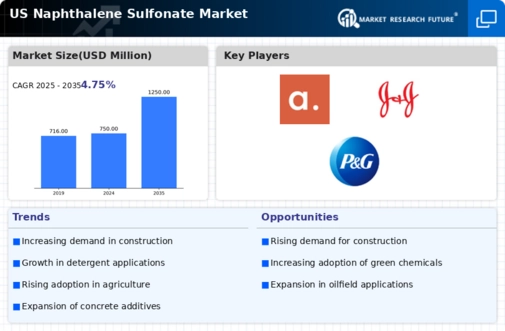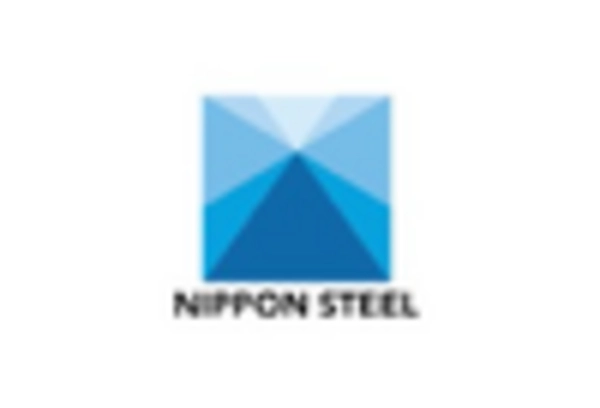Growth in Construction Activities
The naphthalene sulfonate market experiences a notable boost due to the increasing construction activities across the United States. As infrastructure projects expand, the demand for construction chemicals, including naphthalene sulfonates, rises. These compounds are essential in producing high-performance concrete, which is crucial for modern construction. The market for construction chemicals is projected to grow at a CAGR of approximately 6% from 2025 to 2030, indicating a robust demand for naphthalene sulfonate products. This growth is driven by the need for durable and sustainable building materials, which naphthalene sulfonates help facilitate. Consequently, the naphthalene sulfonate market is poised to benefit significantly from this trend, as manufacturers seek to meet the increasing requirements of the construction sector.
Advancements in Chemical Manufacturing
Technological advancements in chemical manufacturing processes are significantly influencing the naphthalene sulfonate market. Innovations in production techniques enhance the efficiency and reduce the costs associated with naphthalene sulfonate synthesis. For instance, the adoption of more sustainable and eco-friendly methods is becoming prevalent, aligning with industry trends towards greener production. The naphthalene sulfonate market is likely to see a shift towards these advanced methodologies, which not only improve product quality but also reduce environmental impact. As a result, manufacturers are expected to invest in upgrading their facilities, potentially leading to a market growth rate of around 5% annually over the next few years. This evolution in manufacturing practices is crucial for maintaining competitiveness in the naphthalene sulfonate market.
Rising Awareness of Performance Enhancers
There is a growing awareness among industries regarding the benefits of performance-enhancing additives, such as naphthalene sulfonates. These compounds are recognized for their ability to improve the workability and durability of concrete and other materials. As industries strive for higher quality and efficiency, the naphthalene sulfonate market is likely to see increased adoption of these additives. The construction and manufacturing sectors are particularly focused on enhancing product performance, which could lead to a market growth of approximately 4% over the next few years. This trend reflects a broader shift towards optimizing material properties, thereby positioning naphthalene sulfonates as essential components in various applications.
Increasing Demand from the Textile Industry
The textile industry is a significant consumer of naphthalene sulfonates, particularly in dyeing and finishing processes. As the demand for textiles continues to rise, driven by both domestic and international markets, the naphthalene sulfonate market is likely to experience increased consumption. Naphthalene sulfonates serve as effective dispersing agents, enhancing the quality and efficiency of dye application. The textile sector's growth is projected to contribute to a compound annual growth rate of approximately 4% in the naphthalene sulfonate market over the next five years. This trend indicates a robust interdependence between the textile industry and the naphthalene sulfonate market, suggesting that fluctuations in textile demand could directly impact the market dynamics of naphthalene sulfonates.
Regulatory Support for Chemical Innovations
Regulatory frameworks in the United States are increasingly supportive of innovations within the chemical sector, including the naphthalene sulfonate market. Policies aimed at promoting sustainable chemical practices encourage manufacturers to develop and adopt environmentally friendly products. This regulatory environment fosters research and development initiatives, which are essential for the advancement of naphthalene sulfonate applications. The naphthalene sulfonate market stands to gain from these supportive measures, as they may lead to the introduction of new formulations that meet stringent environmental standards. As a result, the market could witness a growth trajectory of around 3% annually, driven by the need for compliance and innovation in product offerings.

















Leave a Comment